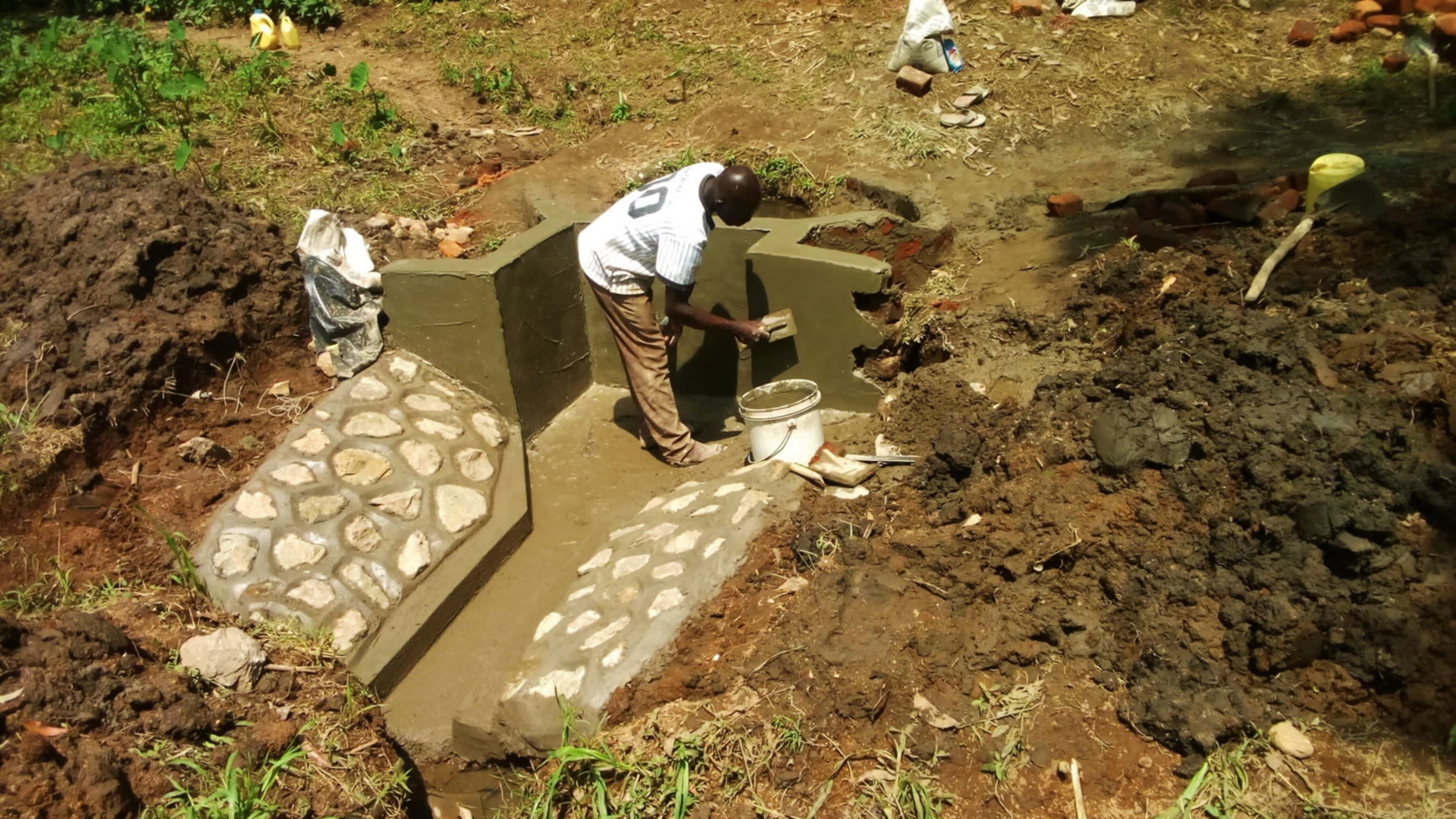This project is a part of our shared program with Western Water and Sanitation Forum (WEWASAFO). Our team is pleased to directly share the below report (edited for clarity, as needed).
Welcome to the Community
Mungulu Village is unique because of its strong women. Thus, women living here are the main players in the community's economy. It is the responsibility of women to ensure that the 95% of activities are done, since most men have neglected their duties for alcohol.
These women wake up early in the morning to ensure that their children get ready and head off to school. Then come the multiple trips to Zikhungu Spring to ensure that the water supply at home is enough for the day. They then go to their farms or to the market centers to sell goods, making sure there is enough food on the table for their families at dinner.
Water Situation
Over 30 households rely on Zikhungu Spring to meet their drinking, cooking, washing, and irrigation needs.
The people relying on Zikhungu Spring face various challenges; the dry season increases busyness as people from other communities travel to this reliable spring. This forces the women and children to wait longer at the spring, as long lines form and conflicts arise. These conflicts arise because of a huge number of people relying on such a small resource. During the rainy season, it’s still hard to fetch water because of slippery banks. Not only that, but the increased rains wash even more waste into the contaminated water.
The community battles waterborne diseases like typhoid and amoebiasis as a result of contaminated water from unprotected Zikhungu Spring.
Sanitation Situation
Sanitation and hygiene is also wanting, as most people lack proper latrines, dish racks, clotheslines and other facilities. When asked about these things, it was obvious they need more information on good hygiene and sanitation practices.
We also noticed that those who lack latrines aren't sharing with their neighbor, but are instead relieving themselves in the brush around their household compounds. Without a proper pit to dispose of this waste, rains can wash feces downhill and into water sources like Zikhungu Spring.
Mr. Moses Saina said, "A good life is a life when people are healthy; consuming clean and safe water and being sensitive to observe proper hygiene and sanitation. In my community, that is too opposite because the health status of individuals has been deteriorating since long ago. This is attributed to consumption of unclean water and due to ignorance and lack of sufficient information on proper hygiene and sanitation."
Plans: Hygiene and Sanitation Training
Community members will attend hygiene and sanitation training for at least three days. This training will ensure participants are no longer ignorant about healthy practices and their importance. The facilitator plans to use PHAST (Participatory Hygiene and Sanitation Transformation), CLTS (Community-Led Total Sanitation), ABCD (Asset-Based Community Development), group discussions, handouts, and demonstrations at the spring.
Training will also result in the formation of a committee that will oversee operations and maintenance at the spring. They will enforce proper behavior around the spring and delegate tasks that will help preserve the site, such as building a fence and digging proper drainage.
Plans: Sanitation Platforms
On the final day of training, participants will select five families that should benefit from new latrines.
Training will also inform the community and selected families on what they need to contribute to make this project a success. They must mobilize locally available materials, such as bricks, clean sand, hardcore, and ballast. The five families must prepare by sinking a pit for the sanitation platforms to be placed over. All community members must work together to make sure that accommodations and food are always provided for the work teams.
Plans: Spring Protection
Protecting the spring will ensure that the water is safe and adequate for drinking. Construction will keep surface runoff and other contaminants out of the water. Fetching water is predominantly a female role, done by both women and young girls. Protecting the spring and offering training and support will therefore help empower the female members of the community by giving them more time and efforts to engage and invest in income-generating activities.

 Protected Spring
Protected Spring
 Rehabilitation Project
Rehabilitation Project






























